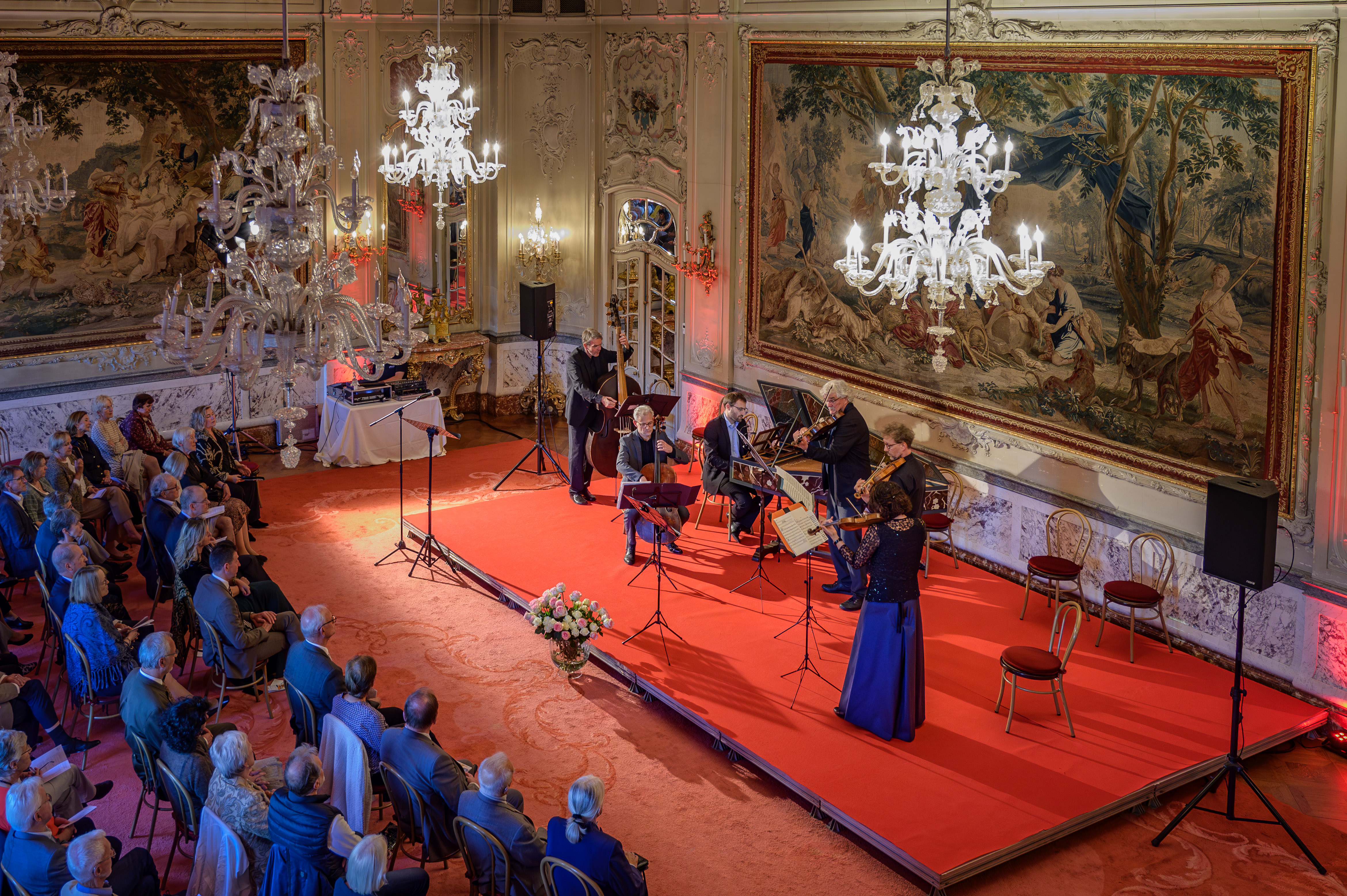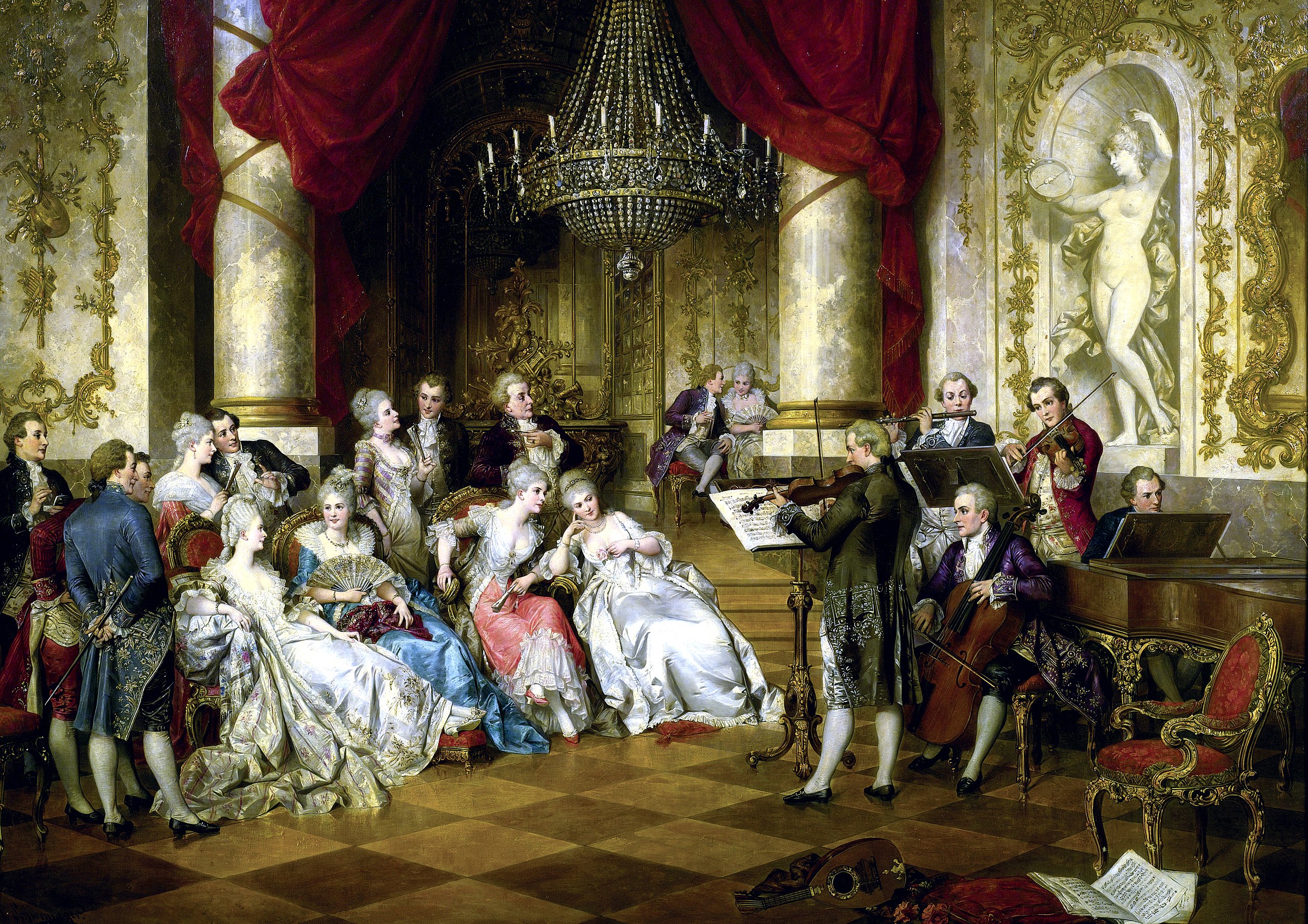The Difference Between a Symphony, Philharmonic, and Chamber Orchestra?
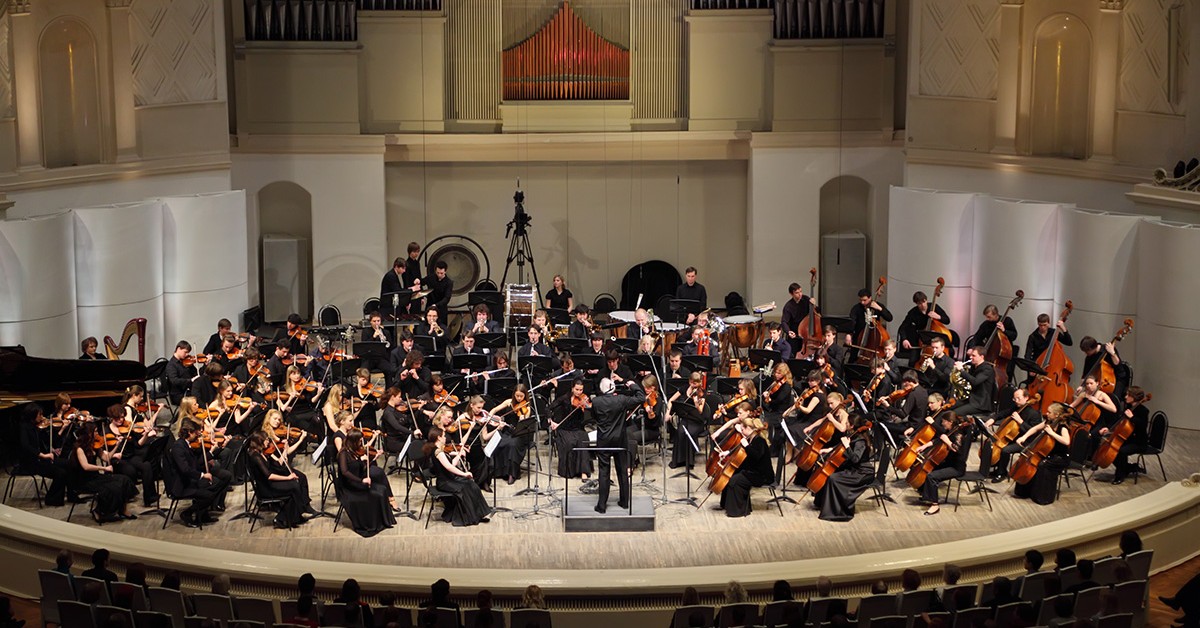
Classical Music Types Simplified
A symphony is a large, multi-movement work often composed for a full orchestra, typically structured in four contrasting movements, with one often using sonata form. The term itself is rooted in the Greek word for “harmony of sound.” An orchestra, broadly speaking, is a large ensemble of musicians, usually with a strong string section; however, the term also refers to a designated seating area in theaters, known as “orchestra level,” a reference to the Greek ὀρχήστρα, the front part of ancient stages where the chorus performed. Symphony orchestras are traditionally larger and designed for complex symphonic works, although some omit “orchestra” from their name (e.g., California Symphony). The word philharmonic, meaning “harmonious music,” functions as a differentiating label for orchestras within the same city (e.g., New York Philharmonic vs. New York Symphony Orchestra) without implying a structural or functional difference; both terms ultimately represent similar ensembles performing grand compositions.
Chamber music and chamber orchestras reflect the French term chambre, meaning room, highlighting their original purpose for intimate performances in smaller spaces. Chamber orchestras, typically comprising up to 50 musicians, suit smaller venues and produce a distinct sound due to limited instrumentation and acoustic differences. This contrasts with full orchestras of around 100 musicians, which perform in large concert halls, creating a fuller, more powerful sound.
To find chamber, symphony, or philharmonic concerts near you, check out our guide to upcoming classical music events in Miami.
The Unique Experience of Chamber Music
Chamber music is often described as the most personal form of classical music. Its smaller ensembles allow for close collaboration, with each musician contributing a distinctive voice to the whole. This setup not only makes chamber music ideal for intimate venues but also fosters a special relationship between musicians and audiences, drawing listeners into the expressive, conversational nature of each performance. Unlike larger orchestras, chamber musicians work without a conductor, relying instead on shared cues and a mutual understanding to guide the performance. This spontaneity adds an element of freshness to each concert, making it both interactive and unpredictable.
Popular Pieces: Iconic works like Beethoven’s string quartets and Schubert’s “Trout Quintet” highlight chamber music's emotional range and technical beauty, capturing listeners with each instrument’s individual voice.
For more on chamber music and its importance in classical traditions, explore Chamber Music America.
Orchestral Music: The Grandeur of Symphony and Philharmonic
Orchestral music, encompassing both symphony and philharmonic orchestras, brings together a full spectrum of instruments—strings, woodwinds, brass, and percussion—to create a rich, layered sound. These large ensembles produce powerful, sweeping performances that fill concert halls and evoke a range of emotions. A conductor leads the orchestra, ensuring that each section harmonizes seamlessly and that the music conveys its intended dynamics and expression.
Symphony Orchestra: The Core of Orchestral Tradition
A symphony orchestra is specifically designed to perform symphonies and other large-scale works. These orchestras often play diverse repertoires, from classical symphonies to contemporary pieces, and their performances are marked by their size and dynamic range.
Philharmonic Orchestra: Tradition and Community
A philharmonic orchestra functions similarly to a symphony orchestra but often has historical or cultural significance within its city. The term “philharmonic” adds a distinct identity and sometimes denotes a second major orchestra within a metropolitan area, as in the case of the New York Philharmonic.
Notable Chamber and Orchestral Ensembles
Well-Known Chamber Ensembles
- String Quartet: Two violins, a viola, and a cello; popularized by composers like Haydn and Beethoven.
- Piano Trio: Piano, violin, and cello; rich in Romantic and Classical repertoire.
Famous Orchestras
- Cleveland Orchestra: The Cleveland Orchestra is renowned for its precision and elegance, often regarded as one of the finest ensembles in the world, celebrated for its interpretations of both classical and contemporary repertoire.
- New York Philharmonic: One of America’s oldest orchestras, renowned for its versatile programming.
- Chicago Symphony Orchestra: Known for its excellence in both symphonic and philharmonic repertoires.
- London Symphony Orchestra: Celebrated for its interpretations of British composers and a diverse global repertoire.
What Is a Symphony Orchestra?
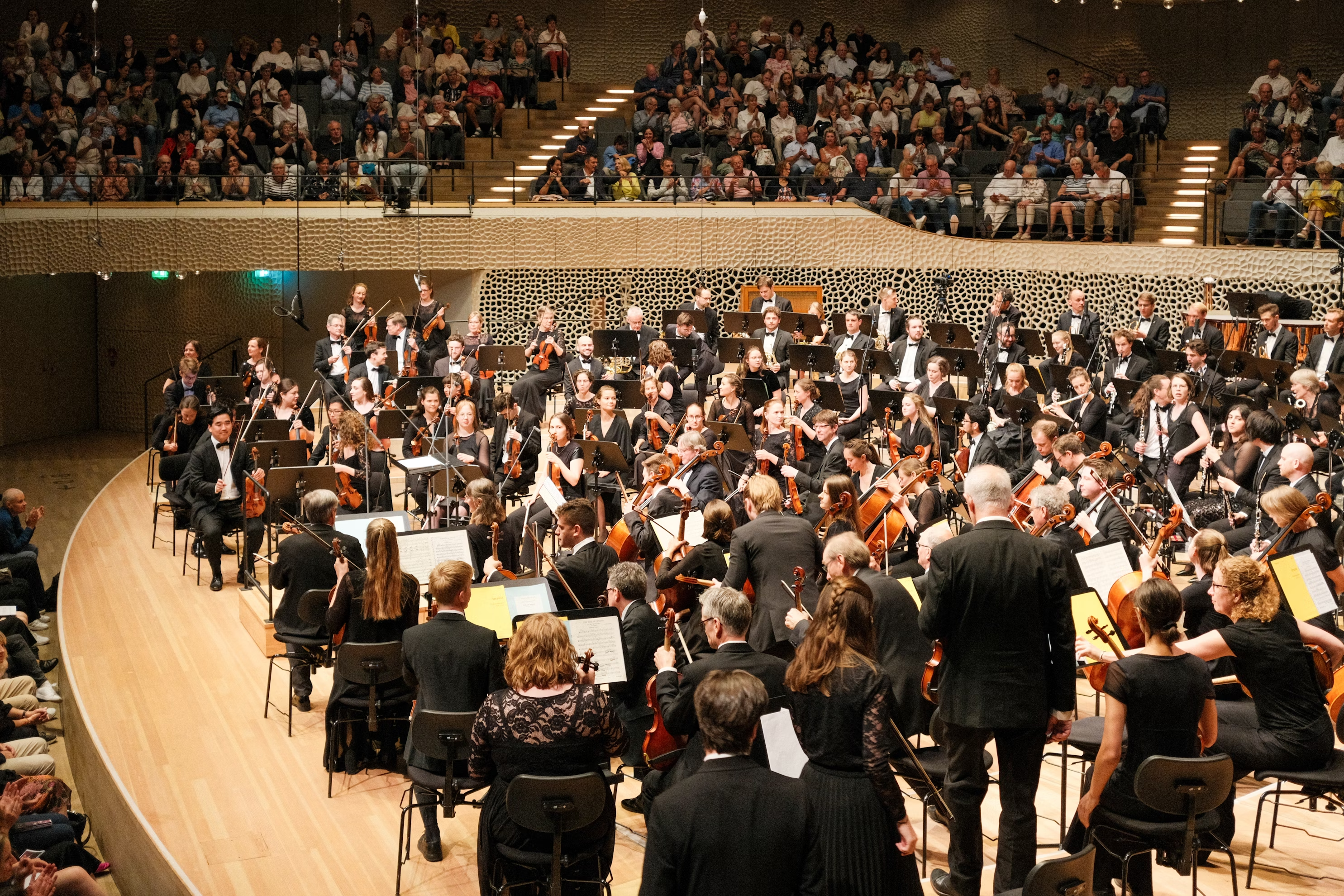
Comparing Chamber Music, Symphony, and Philharmonic: Key Differences
These forms of classical music offer unique experiences shaped by ensemble size, performance style, and audience interaction.
Size and Structure: Chamber music features small ensembles with one musician per part, creating a close-knit, intricate sound. Symphony and philharmonic orchestras, by contrast, have larger sections with multiple players per part, resulting in a fuller, grander sound.
Performance Venues: Chamber music is typically performed in smaller, more intimate spaces, enhancing the personal connection with the audience. Symphony and philharmonic orchestras are designed for large concert halls, where their rich, layered sound can fully resonate.
Musical Direction: Chamber ensembles collaborate directly without a conductor, often improvising cues among themselves. In contrast, symphony and philharmonic orchestras rely on a conductor to synchronize timing, dynamics, and the overall cohesion of the performance.
Historical Roots of Chamber, Symphony, and Philharmonic Music
Chamber Music Origins
Chamber music originated as private entertainment in aristocratic homes during the Renaissance and Baroque eras, allowing composers to create intricate, personalized pieces. This intimate style remains central to chamber music’s appeal today, with many compositions still focused on small, expressive ensembles.
The Rise of Symphony and Philharmonic Orchestras
Larger orchestras gained popularity in the Baroque period, growing into the robust symphony and philharmonic institutions we know today. Orchestras became symbols of cultural prestige, with symphony and philharmonic names cementing their roles within their cities. Today, they perform diverse repertoires that range from classical to contemporary works, drawing large audiences to celebrate the communal experience of orchestral music.
For a deeper look into classical music history, check out the Library of Congress’s Music History Guide.
Choosing Your Ideal Experience: Chamber, Symphony, or Philharmonic?
Each form of classical music offers a unique experience. Chamber music is ideal for listeners who appreciate close interaction with musicians and a more intimate atmosphere. Symphony and philharmonic performances, on the other hand, provide the grandeur and depth of a large orchestra, perfect for those who enjoy full-bodied sound and dynamic contrast. Exploring all three types enriches one’s appreciation of how classical music’s structure and scale influence the emotional experience.
To find chamber, symphony, or philharmonic concerts near you, check out our guide to upcoming classical music events in Miami.
Embracing the Full Spectrum of Classical Music
The diversity within classical music, from the close-knit setting of chamber music to the sweeping impact of symphonic and philharmonic orchestras, highlights the genre’s broad appeal. Each type brings its own charm, and together they create a vibrant and multi-faceted musical landscape for audiences to enjoy and explore.

Similar Posts

Crossroads of Culture: Highlights from Art Basel Miami Beach 2025

Spotlight Series: Artists who took center stage during Miami Art Week

Savor the Season: Bulla Gastrobar Unveils a Spanish-Inspired Fall Menu

The Sound Inside Us: How Music Rewires the Mind and Restores the Soul
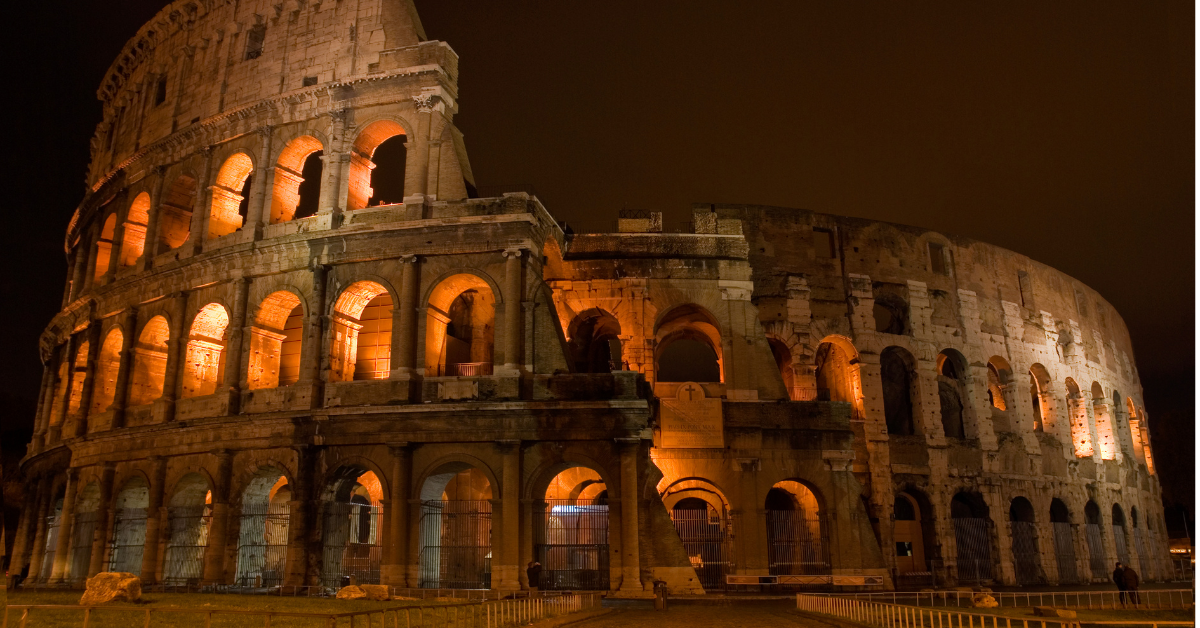
The Colosseum’s New Encore: From Gladiators to Global Music Stages

Experience World-Class Performances for Less with Tomorrow's Stars

Miami's Lincoln Road Turns Into a Free Open-Air Sculpture Garden for Miami Art Week 2025

From Sacred Rituals to Global Stages: A Living History of Theater

The Evolution of Culture Through the Arts

A Culture Lover’s Sarasota, Florida Guide: Art, Performance & Creative Things to Do

The Ultimate Hollywood Florida Arts & Culture Guide

